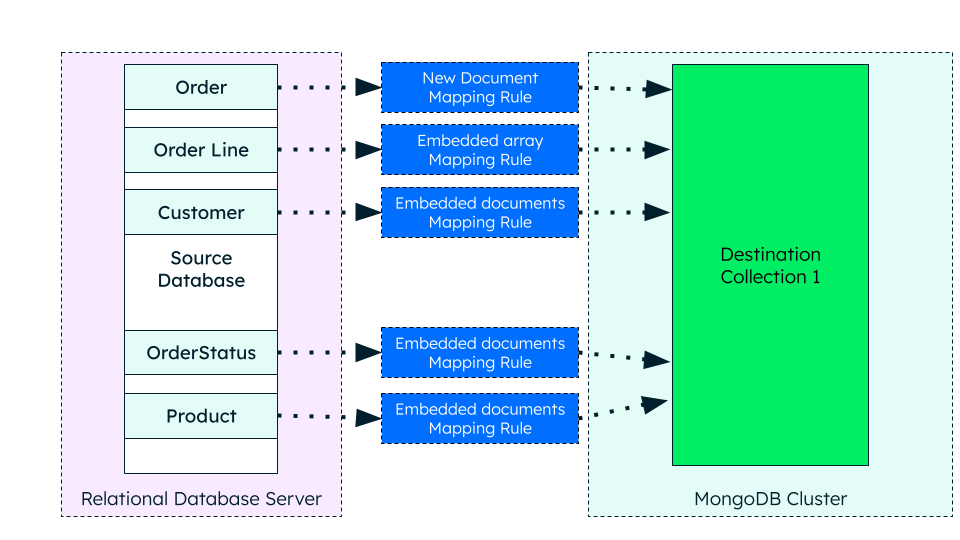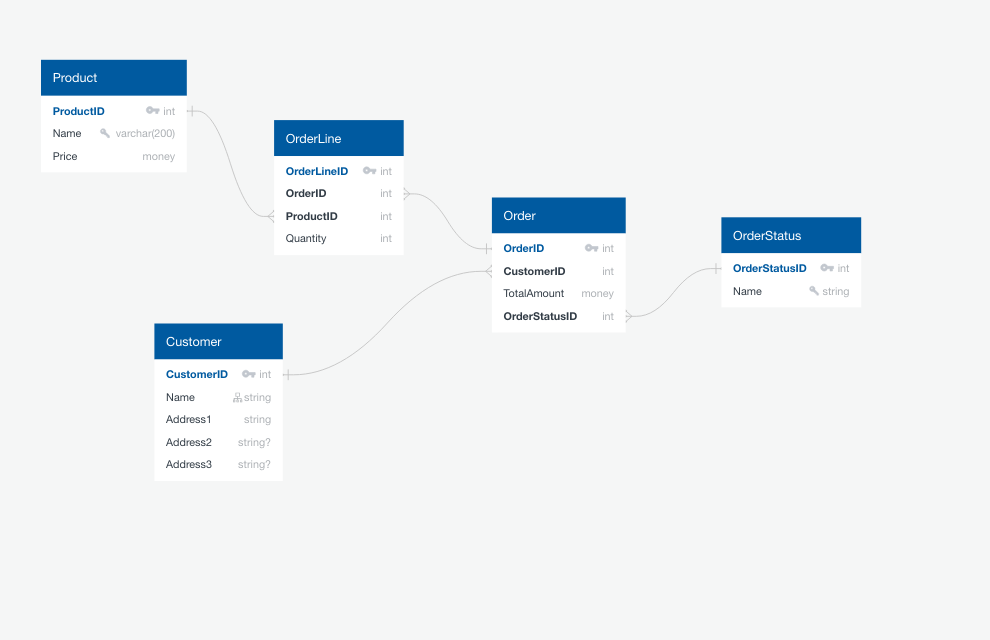Schema Mapping
On this page
Schema mapping is the process by which you decide how your source relational schema should be represented in your target MongoDB database. Facilitate the schema mapping process in Relational Migrator through customized mappings rules.
Mapping Rules
During the schema mapping design process, Relational Migrator automatically derives the source data model from the schema of your relational database. The destination data model can be influenced by customizing:
Mapping Rule options
Project ID field options

Tip
Relational Migrator supports Oracle materialized views. If your data model requires complex mappings that involve many tables, you can create a materialized view using a custom SQL query instead. The materialized view acts as a single source table and simplifies the required mappings. Performing complex joins in your Oracle source database can streamline your migration project and may improve performance compared to a migration job that performs the same transformations live. For more information, see the Oracle SQL Language Reference.
Relational Migrator does not support materialized views for other databases at this time.
Example
This section provides a scenario and example implementation for the schema mapping process. This example converts a relational data model to a MongoDB data model.
Using the MongoEnterprises relational database, the goal is to flatten
all of the database's tables, so that all the order and customer data is
available in a single MongoDB collection.
Use-Case Denormalizing Table Structure
The following image shows the relational data model to be denormalized using the Relational Migrator.

Mapping Rule Results
When using Relational Migrator, the goal is to achieve the following MongoDB data model.
The Order collection contains all the child elements from the Customer,
Order, Product and Order Line tables. The collection has nested
objects for the migrated tables. The results look like this:
{ "_id": { "OrderID": 1 }, "CustomerID": 1, "OrderStatusID": 1, "TotalAmount": 550, "Customer": { "CustomerID": 1, "Name": "Joelynn Fawthrop", "Address1": "86 Dwight Pass", "Address2": "Carregal", "Address3": "3800-854" }, "OrderLines": [ { "OrderLineID": 1, "OrderID": 1, "ProductID": 1, "Quantity": 1, "Product": { "ProductID": 1, "Name": "MongoDB 5.0 Action Figure", "Price": 50 } }, { "OrderLineID": 4, "OrderID": 1, "ProductID": 3, "Quantity": 1, "Product": { "ProductID": 3, "Name": "Gold Plated MongoDB Compass", "Price": 500 } } ], "OrderStatus": { "OrderStatusID": 1, "Name": "Order Placed" } }
Mapping Rule Implementation
To accomplish the target data model results with Relational Migrator, configure
the Order table with the following mapping rule options:
Relational Table | Mapping Rule Type | Root Path |
|---|---|---|
Order | N/A | |
OrderLine |
| |
Customer |
| |
OrderStatus |
| |
Product |
|